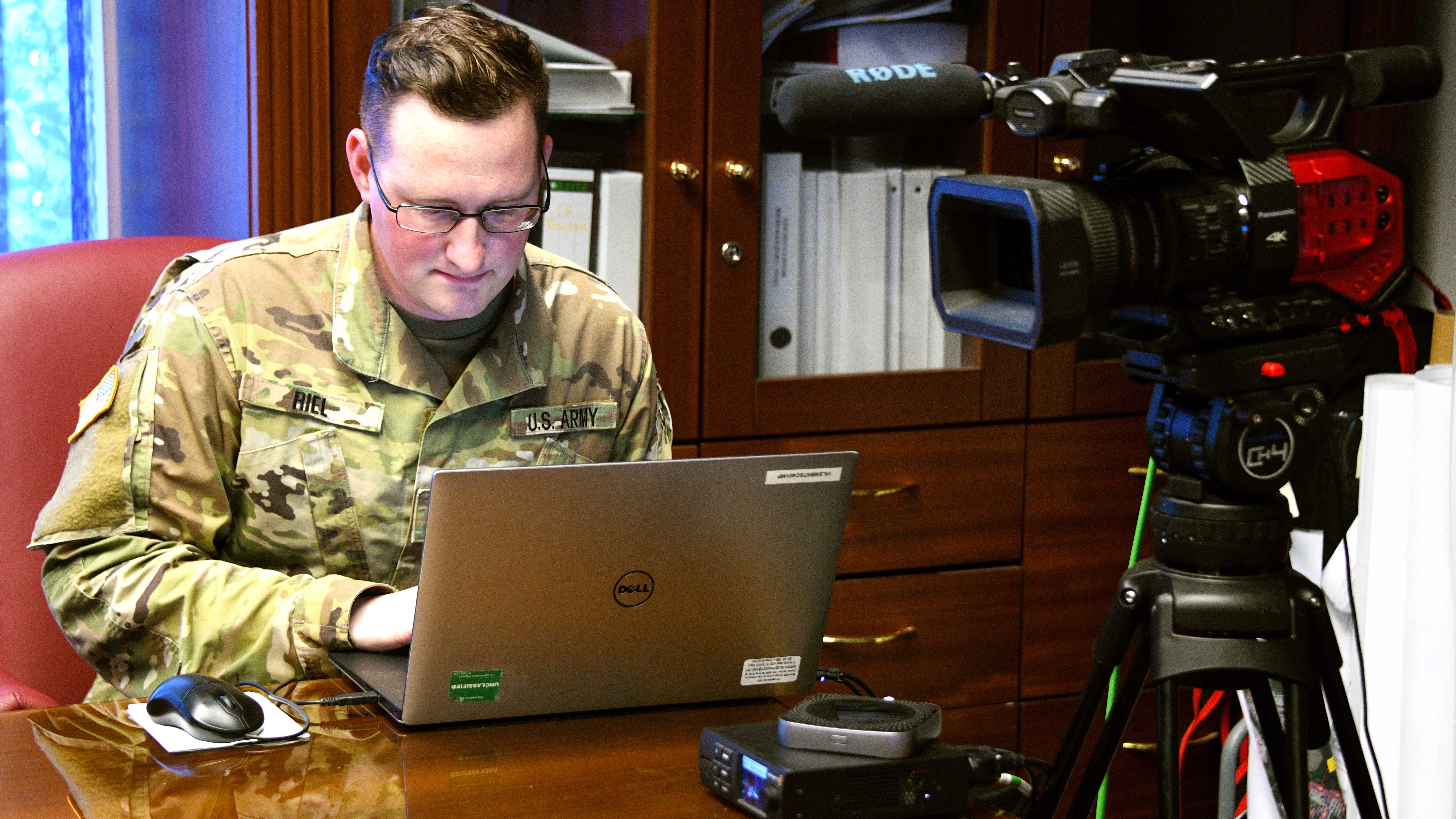Army, Soldiers Stay Connected During Pandemic
Army, Soldiers Stay Connected During Pandemic

From virtual town halls to online religious services, the Army continues to find ways to connect with soldiers and families sequestered at home during the COVID-19 pandemic—and the efforts have produced surprising results, officials said.
“This is an interesting phenomenon that’s occurring,” said Maj. Gen. Thomas Solhjem, the Army’s chief of chaplains. “Not only are we connecting with our soldiers, families, civilians, veterans ... but that audience is extending over into civil society.”
For example, Solhjem said, a virtual Easter sunrise service he led from Arlington National Cemetery that typically would draw 350–400 viewers this year drew “tens of thousands” from around the world.
The Army also is connecting with soldiers and families it typically may not have reached, said Col. Steve Lewis, deputy director of the Army Quality of Life Task Force.
“One of the challenges that we face today is that the majority of our families live off-base and sometimes fairly far away from bases,” he said. “If there’s one thing, kind of a silver lining that we’re observing, is that because people want information … we’re actually connecting to families that maybe did not have a connection before.”
It’s important for the Army to stay in touch with soldiers during the pandemic, said Col. Dennis Sarmiento, chief of the Army Surgeon General Behavioral Health Division. “People are social animals. Soldiers and family members are social animals,” he said. “We need to stay connected, and that’s important to our mental health and mental well-being.”
The Army will continue to provide virtual services to soldiers and their families, Solhjem said, adding that chaplains across the Army are “doing some extremely creative things to deliver what they would normally do in person or in smaller groups, virtually.”
This includes adapting to social distancing guidelines, experimenting with different online platforms to deliver counseling or medical services, and developing a resource guide that contains resilience skills and activities soldiers and families can do to cope, said James Helis, director of the Army Resiliency Directorate.
“We are developing new ways to stay connected, maintaining the bonds, and we're, all across the spectrum, trying to make sure we capture lessons of how we do this for the next time we find ourselves in this kind of the situation,” he said.
Some of these new initiatives are likely to stay even after the pandemic is over, leaders said. “This has really given us an opportunity to take advantage of that technology, and [it] allows us to look at how can we continue to deliver this support and services and resources when we all start coming back to work on the installation again,” Lewis said.
Army leaders are already looking at what the future will look like, Solhjem said.
“One of the things that we're doing is we're compiling our best practices and … sharing them so that leaders across the Army and others can benefit from what we're learning,” he said. “And we are looking to the future. What is our plan going forward? … How do we get back to a new normal? How do we do that as an Army?”

